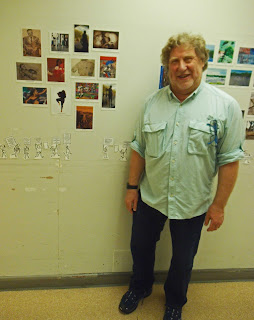After the success of the Small World
Futures exhibition in 2018, we are returning with a new inclusive
art project Love Tokens and Bad Pennies at the #unsettledgallery in
2019. We will be placing one artwork on the London streets during
each day of February. Artworks will be accompanied by a new written
work by a poet or author here on the CollectConnect blog. The artworks will be placed in
or beside fountains and sacred waterways in London. The public can
view them or pick them up for free and take them home.
Does love endure forever? Does a bad
penny always turns up?
Both the Love Token and the Bad Penny
are part of the currency of life, two sides of the same coin. These
everyday objects are defaced or distinguished to help us remember
those who we hold dear and those who we would rather forget.
Love Tokens are part of our heritage
but live on today as symbols of courtship and love. The most common
tokens are coins smoothed flat on one or both sides. They can
then be engraved, either with initials, messages of love or even
drawings; or embellished with stones, jewels or punched-out designs.
In the past such tokens were exchanged between lovers, but this
exhibition reaches beyond these traditional boundaries. In an age of
virtual friendships, tokens are a tangible memento of time spent
together which equally capture the poignancy of loss. In the UK the
history of tokens includes ones for prisoners or convicts (engraved
by those being deported to the penal colonies in Australia) and
pilgrims. Tokens were often kept close to a loved one's heart and
body. So as not to be mistaken for other coins and objects they
were bent and manipulated: you can still find “benders” (a coin
bent twice, one side up and the other side down) in the muddy banks
of the River Thames.
The phrase 'A Bad Penny always turns
up' may come from the fact that historically coins could be 'bad',
that is, forged or debased in some way. In the Middle Ages,
people might 'clip' coins to remove some of the precious metal they
were made from. As early as the 14th Century the term 'bad penny' was
being used to describe a person or thing which is unpleasant,
disreputable, or otherwise unwanted, especially one which repeatedly
appears at inopportune times. What made people link bad pennies
with the notion of something unwelcome returning is not known.
Perhaps it was the sense that, if you clip or pass on a bad penny, it
won't be long before it comes back to you in your change.
Artists and writers
Lesley Cartwright
Stella Tripp
Tracy Boness
Francesca Albini
Melanie Honebone
Eskild Beck
Debbie Chessell
Alban Low
Dean Reddick
Ed Arantus
Bryan Benge
Simon Brewster
Barbara Dougan
Natalie Low
SJ Fowler
Ginny Reddick
Rebecca Lowe
Chopsticks Nelson
Astra Papachristodoulou
Chris Brown
Susie Mendelsson
Stella Tripp
Tracy Boness
Francesca Albini
Melanie Honebone
Eskild Beck
Debbie Chessell
Alban Low
Dean Reddick
Ed Arantus
Bryan Benge
Simon Brewster
Barbara Dougan
Natalie Low
SJ Fowler
Ginny Reddick
Rebecca Lowe
Chopsticks Nelson
Astra Papachristodoulou
Chris Brown
Susie Mendelsson
1-28 February 2019
#unsettledgallery
LONDON
#unsettledgallery
LONDON








































